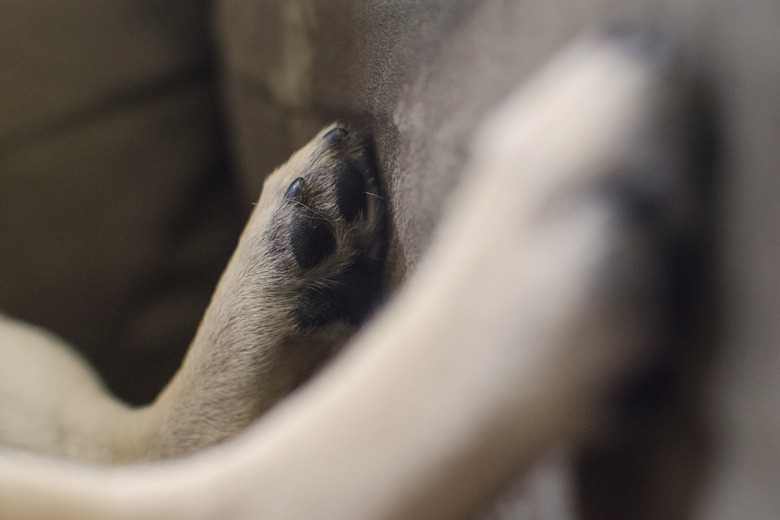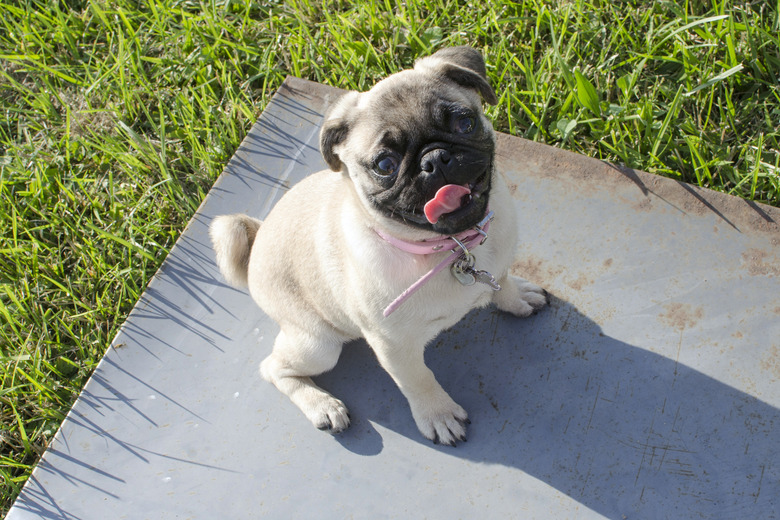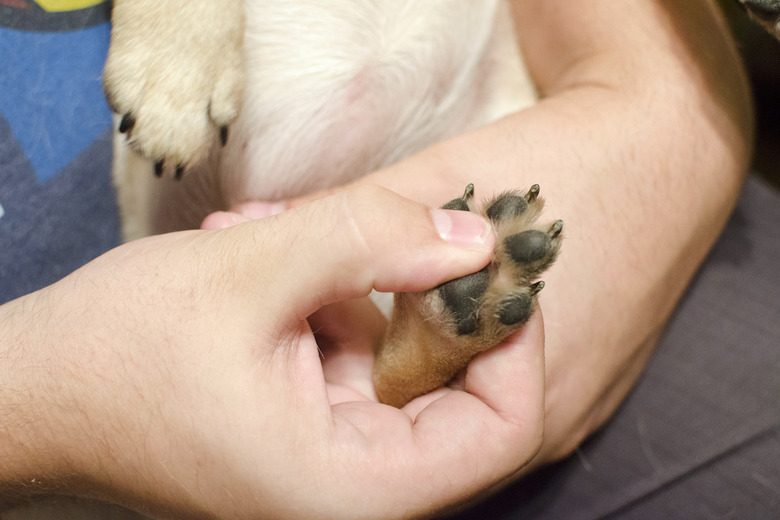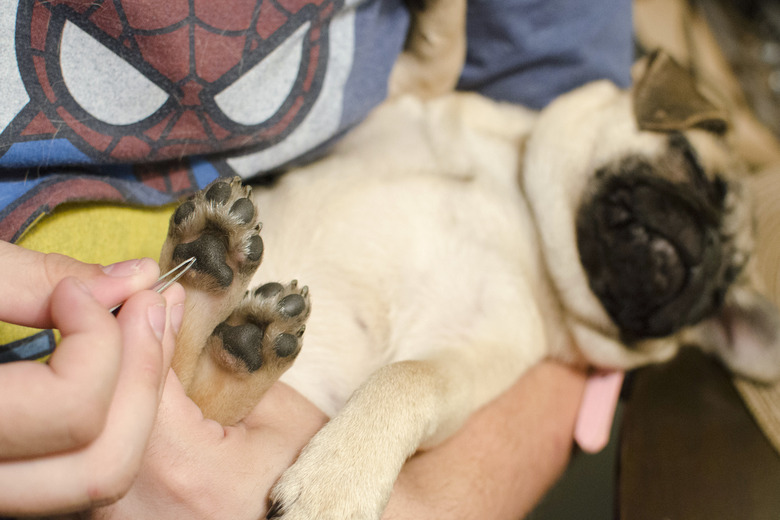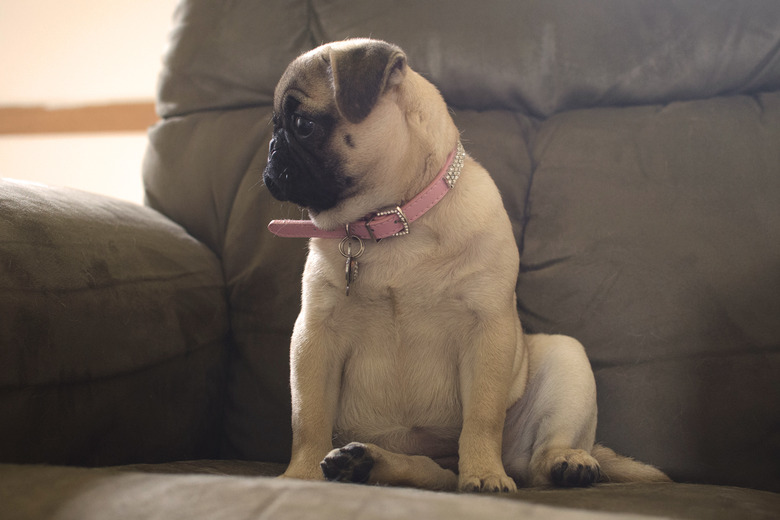What Are The Treatments For A Cut On A Dog's Paw Pad?
Dogs put daily stress on their paw pads so any injury in this area can seriously affect their total health.
Significance
Significance
Dog pads are tough and resilient, but take daily abuse from the environment. Injury to a dog's pads can severely affect mobility.
Types
Types
Dog pad injuries are caused by very hot or very cold surfaces, sharp or abrasive objects and corrosive materials on the ground.
Identification
Identification
Pad injuries often cause a dog to limp or favor one leg. A dog that licks or bites their pads excessively may have a wound or irritation. Look carefully at the surfaces of a dog's pads, then gently spread the toes and look for wounds inside the edges of the pads.
Prevention/Solution
Prevention/Solution
To treat a dog pad injury, gently trim excess fur from the area. Immerse the foot in warm water, let soak and then inspect for tears, punctures or abrasions. Remove glass, stones or sharp objects. Apply pressure with clean gauze to stop minor bleeding. Antibiotic ointment can be applied as necessary. Seek immediate veterinarian care if there is significant bleeding, severely torn or lacerated skin, or if there are foreign objects that you cannot remove. Ice packs should be applied for burned pads, and cool water–not hot–will soothe frozen pads. Chemicals, like road salt, should be washed off with plenty of clear water.
Warning
Warning
Dog pads are resilient, but injuries can be difficult to heal. For severe pad wounds, follow a veterinarian's instructions for cleaning, dressing, and restricting your dog's movements until the pad is fully healed.
Always check with your veterinarian before changing your pet's diet, medication, or physical activity routines. This information is not a substitute for a vet's opinion.

